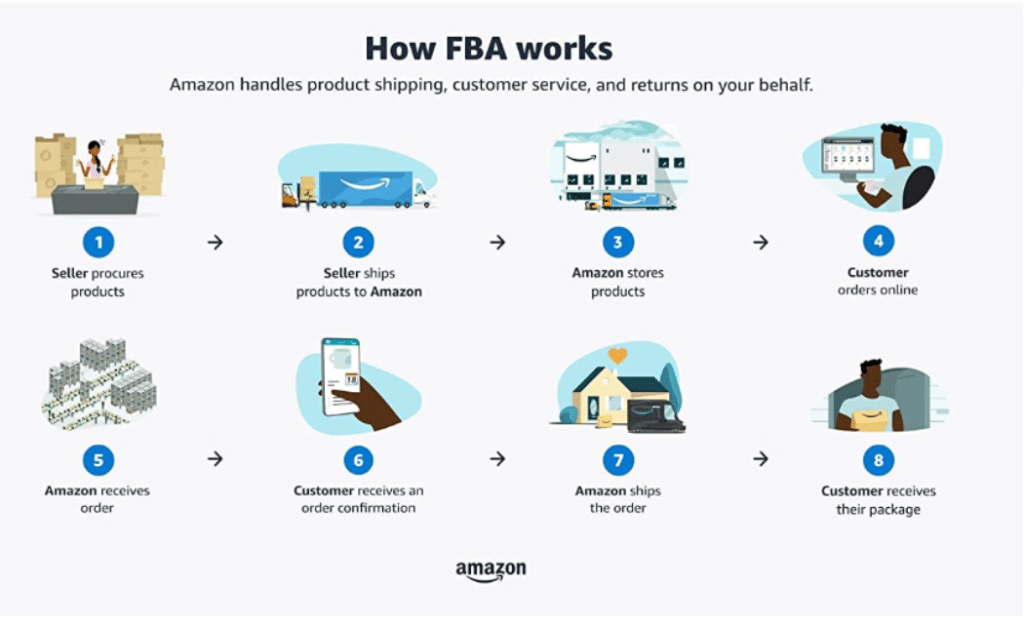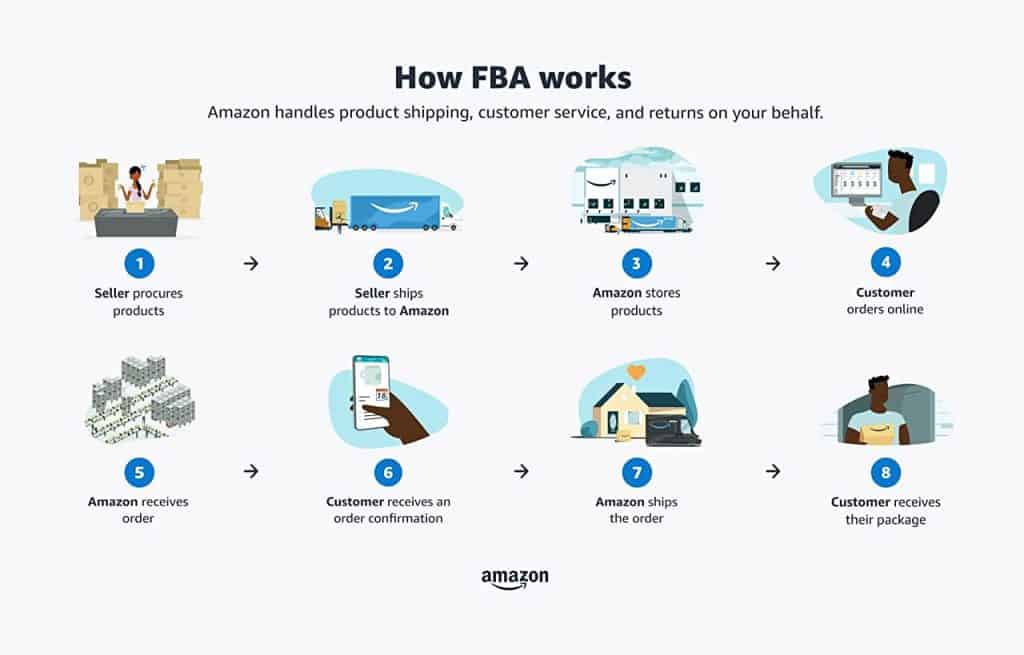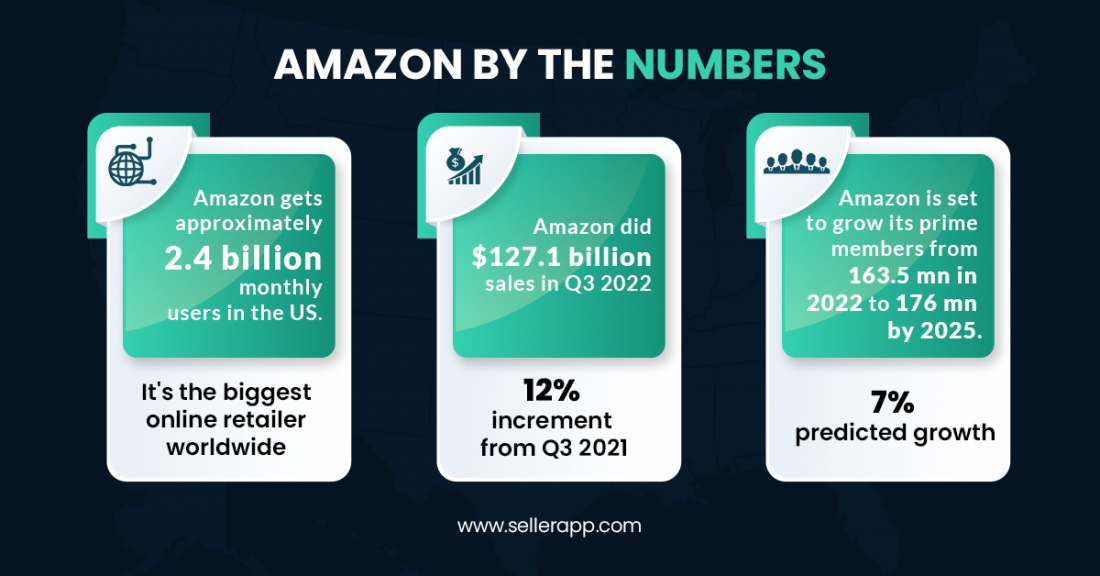Unlock the secrets of successful Amazon FBA selling with this beginner’s guide and start maximizing your profits today!
Table of Contents
- Introduction to Amazon FBA
- Discovering the Benefits of Amazon FBA
- Exploring the Amazon FBA Business Model
- Selecting Products to Sell on Amazon FBA
- Partnering with Suppliers and Handling Inventory
- Shipping to Amazon FBA Warehouses
- Understanding Amazon FBA Fees
- Learning Amazon FBA With Online Resources
- Marketing Your Amazon FBA Products
- Tracking Your Progress and Growing Your Business
- Navigating Common Challenges
- Conclusion
- FAQs
Introduction to Amazon FBA
Welcome to the world of Amazon FBA! Have you ever heard of FBA before? It stands for Fulfillment by Amazon. But what does that mean? Let me explain it to you in simple terms.
Amazon FBA is a service offered by Amazon where sellers can store their products in Amazon’s fulfillment centers. When customers place orders, Amazon picks, packs, and ships the products to the buyers on behalf of the sellers. In other words, Amazon takes care of the entire shipping process, making it easier for sellers to focus on other aspects of their business.
Discovering the Benefits of Amazon FBA
Amazon FBA, short for Fulfillment by Amazon, is a service provided by the e-commerce giant that offers numerous advantages to sellers. Let’s explore how Amazon FBA can benefit you as a seller.
What Does Amazon Handle?
When you sign up for Amazon FBA, you can offload many time-consuming tasks to Amazon. This includes storing your products in Amazon’s warehouses, picking, packing, and shipping orders to customers, as well as handling customer service inquiries and returns. By letting Amazon handle these aspects, you can focus on growing your business and sourcing new products.
Why Choose Amazon FBA?
There are several reasons why sellers opt for Amazon FBA. One key benefit is the ability to offer Prime shipping to customers, which can lead to a higher likelihood of making a sale due to faster delivery times. Additionally, many customers trust and prefer buying products that are fulfilled by Amazon, which can help you gain their confidence and increase your sales.
Exploring the Amazon FBA Business Model
So, you’re curious about diving into the world of Amazon FBA, but not quite sure where to start? Let’s break it down for you in simple terms. The Amazon FBA business model is like having a partner that helps you store, pack, and ship your products to customers, making your life as a seller a whole lot easier.

Image courtesy of www.yaguara.co via Google Images
How to Start Your FBA Business
First things first, you need to sign up for an Amazon seller account. This is where you manage your listings, track your sales, and monitor your business performance. Once you’re all set up, you can start sourcing products to sell on Amazon.
When you find products you want to sell, you send them to Amazon’s fulfillment centers where they take care of storing your inventory and shipping it out to customers. It’s like having your own virtual warehouse without the hassle of managing it yourself.
Understanding Your Role as a Seller
As an FBA seller, your main focus is finding profitable products, listing them on Amazon, and promoting them to attract buyers. Amazon handles the logistics like storage, packing, and shipping, leaving you with more time to grow your business and explore new opportunities.
Being an FBA seller also means providing top-notch customer service. Amazon takes care of returns and inquiries, but it’s important to ensure your customers are happy with their purchases. Happy customers mean positive reviews and repeat business!
Selecting Products to Sell on Amazon FBA
When entering the world of Amazon FBA, you need to carefully select the products you plan to sell. Think of it like choosing which games to bring to a school event – you want to pick the ones that everyone will enjoy and want to play!
How to Choose Products for Amazon FBA
First, think about what you are passionate about. Just like picking your favorite game to play, selecting products related to your interests can make selling them more fun. If you love puzzles, maybe consider selling unique jigsaw puzzles or brain teasers.
Next, research what products are popular and in demand. It’s like finding out which games are trending at school – you’ll want to offer products that many people are looking to buy. Look at Amazon’s Best Sellers list to see what items are selling well.
Consider the Size and Weight
Just like choosing games that are easy to carry and set up, select products that are not too big or heavy. Large or heavy items can be expensive to store and ship, cutting into your profits. Opt for items that are compact and lightweight for easier handling.
Look at Profit Margins
Think about how much you can make from selling each product, just like figuring out how much you can earn from a game booth at the school fair. Consider the cost of the products, Amazon’s fees, and shipping expenses. Aim for products with good profit margins to help your business grow.
Partnering with Suppliers and Handling Inventory
In order to run a successful Amazon FBA business, it’s essential to establish good relationships with suppliers and effectively manage your inventory.

Image courtesy of www.brandbuilderuni.com via Google Images
Working with Suppliers
Suppliers are the key partners in your Amazon FBA journey. These are the companies or individuals that provide you with the products you sell on Amazon. When choosing suppliers, it’s crucial to look for reliable partners who offer quality products at competitive prices.
Communication is key when working with suppliers. Make sure to clearly communicate your expectations regarding product quality, shipping times, and pricing. Building a strong relationship with your suppliers can lead to better deals and smoother transactions in the future.
Managing Inventory
Effective inventory management is essential for the success of your Amazon FBA business. You need to keep track of your stock levels, reorder products in a timely manner, and ensure that you have enough inventory to meet customer demand.
Utilizing inventory management tools can help you streamline this process. These tools can track your inventory levels, predict demand, and even help you optimize your storage space in Amazon’s warehouses. By staying on top of your inventory, you can avoid stockouts and maximize your sales potential.
By partnering with reliable suppliers and implementing strong inventory management practices, you can set your Amazon FBA business up for success.
Shipping to Amazon FBA Warehouses
When you’ve chosen the products you want to sell on Amazon using FBA, the next step is getting your inventory to Amazon’s warehouses. This crucial step ensures that your products are available for customers to purchase and that Amazon can handle the fulfillment process for you. Let’s take a closer look at how to ship your products to Amazon FBA warehouses.
Choosing the Right Amazon Warehouse
Amazon has numerous warehouses located across the country to efficiently fulfill orders and reduce shipping times for customers. As an Amazon FBA seller, you need to select the warehouse location where you want to send your products. When creating a shipment plan in your Amazon Seller Central account, Amazon will recommend which warehouse to send your inventory based on various factors like product category, demand, and warehouse capacity.
The Process of Shipping Inventory
Once you’ve decided on the Amazon warehouse where you will be sending your products, you need to prepare your inventory for shipment. This involves labeling your products according to Amazon’s guidelines, packing them securely to prevent damage in transit, and creating shipping labels for each box in your shipment.
After you have prepared your inventory, you can either choose to ship the products yourself or use Amazon’s partnered carriers to handle the transportation. Amazon provides discounted shipping rates for FBA sellers, making it cost-effective to send your products to their warehouses.
Once your shipment arrives at the Amazon FBA warehouse, Amazon’s staff will receive and process your inventory. They will then make your products available for sale on the Amazon website, handle customer orders, and take care of shipping and customer service on your behalf.
Understanding Amazon FBA Fees
When you use Amazon’s FBA service, you can take advantage of their storage facilities, shipping expertise, and customer service. But how does Amazon make money from providing these services to sellers like you? Let’s break down the fees associated with the Amazon FBA program.

Image courtesy of www.brandbuilderuni.com via Google Images
Breaking Down the Fees
As an Amazon FBA seller, you’ll encounter various fees that cover storage, fulfillment, and other services provided by Amazon. These fees help Amazon maintain its vast network of warehouses and logistical operations that enable your products to reach customers quickly and efficiently.
Storage Fees
One of the primary costs associated with using Amazon FBA is storage fees. These fees are based on the size and weight of your products and are charged monthly. It’s essential to manage your inventory effectively to minimize storage costs and ensure that you’re not storing excess or slow-moving products.
Fulfillment Fees
In addition to storage fees, Amazon charges fulfillment fees for picking, packing, and shipping your products to customers. These fees are calculated based on the size and weight of your items and are crucial to consider when pricing your products to ensure profitability.
Additional Fees
Aside from storage and fulfillment fees, there may be other charges such as long-term storage fees, removal fees for unsold inventory, and returns processing fees. It’s essential to understand these additional costs to account for them in your overall business expenses.
| Module | Description |
|---|---|
| Module 1 | Introduction to Amazon FBA and setting up your account |
| Module 2 | Finding profitable products to sell on Amazon |
| Module 3 | Sourcing products and suppliers for your Amazon FBA business |
| Module 4 | Creating your Amazon product listings and optimizing for search |
| Module 5 | Managing inventory and shipping logistics with Amazon FBA |
| Module 6 | Launching and promoting your products on Amazon |
By comprehending the fee structure of the Amazon FBA program, you can make informed decisions about your pricing, inventory management, and overall business strategy. Remember, while there are costs associated with using FBA, the benefits of reaching a broader customer base and leveraging Amazon’s infrastructure often outweigh the expenses.
Learning Amazon FBA With Online Resources
For those looking to delve deeper into the world of Amazon FBA, there are various online resources and courses available to help you master the ins and outs of this business model.
Where to Find Amazon FBA Courses
Amazon FBA courses can be found on popular online learning platforms like Udemy, Coursera, and Skillshare. These courses are designed to guide beginners through the process of setting up and running a successful Amazon FBA business.
Benefits of Taking an Amazon FBA Course
Enrolling in an Amazon FBA course can provide you with structured learning materials, expert insights, and practical tips to help you navigate the complexities of the FBA business model. These courses often cover topics like product research, inventory management, and marketing strategies tailored specifically for Amazon sellers.
Marketing Your Amazon FBA Products
When it comes to selling products on Amazon using their FBA service, marketing plays a crucial role in attracting customers and driving sales. Here are some basic strategies to help you increase your visibility and stand out in Amazon’s competitive marketplace.

Image courtesy of www.sellerapp.com via Google Images
Optimizing Product Listings
One of the first steps in marketing your Amazon FBA products is to optimize your product listings. This includes using relevant keywords in your product titles and descriptions to improve your search visibility. Make sure to provide clear and detailed product information, high-quality images, and competitive pricing to entice potential buyers.
Utilizing Amazon Sponsored Products
Amazon Sponsored Products is a pay-per-click advertising program that allows sellers to promote their products on Amazon’s search results and product detail pages. By using targeted keywords and setting a competitive budget, you can increase your product’s visibility and drive traffic to your listings.
Implementing Social Media Marketing
Utilizing social media platforms like Facebook, Instagram, and Twitter can help you reach a broader audience and drive traffic to your Amazon listings. Create engaging posts, run targeted ads, and collaborate with influencers to promote your products and establish a strong online presence.
Encouraging Customer Reviews
Positive reviews are essential for building trust with potential customers and improving your product’s ranking on Amazon. Encourage satisfied customers to leave feedback by providing excellent customer service, offering incentives for reviews, and responding promptly to any inquiries or concerns.
By implementing these marketing strategies, you can increase your sales, attract more customers, and grow your Amazon FBA business successfully.
Tracking Your Progress and Growing Your Business
As you start your Amazon FBA business, it’s crucial to keep track of how well your products are performing. You can monitor this by checking your sales data on your Amazon seller account. Look at which products are selling well and which ones may need some adjustments. By analyzing this information, you can make informed decisions to optimize your listings and pricing strategies.
Tips for Scaling Up
Once you have a good understanding of how your business is performing, you can start thinking about scaling up. This means expanding your product line, increasing your inventory, and reaching a wider audience. To do this successfully, consider investing in more popular products, improving your marketing efforts, and exploring new markets. Remember, consistency is key when it comes to growing your Amazon FBA business.
Navigating Common Challenges
Starting your Amazon FBA business can be an exciting journey, but like any new venture, you may encounter some challenges along the way. Understanding these common hurdles and how to address them can help you navigate the world of FBA successfully.

Image courtesy of harrisonbevins.com via Google Images
Inventory Management
One common challenge for new Amazon FBA sellers is managing their inventory effectively. It’s essential to keep track of your stock levels to avoid running out of popular items or overspending on slow-moving products. Utilizing inventory management tools and forecasting demand can assist you in maintaining a healthy balance of products in stock.
Competitive Market
With millions of sellers on Amazon, competition can be fierce. To stand out in a crowded marketplace, focus on your unique selling proposition (USP) and work on building your brand. Providing excellent customer service, competitive pricing, and high-quality products can help you differentiate yourself from competitors.
Shipping Challenges
Shipping inventory to Amazon FBA warehouses, especially from locations like China, can pose logistical challenges. Properly preparing your shipments, understanding Amazon’s requirements, and using reliable shipping carriers can streamline the process and minimize delays. Additionally, consolidating shipments and optimizing your shipping strategy can help reduce costs and improve efficiency.
Account Suspension
Account suspension is a risk for Amazon FBA sellers who do not comply with Amazon’s policies and guidelines. To avoid this issue, familiarize yourself with Amazon’s terms of service, maintain transparent communication with customers, and promptly address any customer inquiries or complaints. Proactively monitoring your account health metrics can help you catch any potential issues early and take corrective action.
By recognizing these common challenges and proactively addressing them, you can set yourself up for success as an Amazon FBA seller. Remember, perseverance and a willingness to learn and adapt are key to overcoming obstacles and thriving in the competitive e-commerce landscape.
Conclusion
In this guide, you’ve learned about Amazon FBA, which stands for Fulfillment by Amazon. It’s a service where Amazon takes care of storing, shipping, and handling customer service for products from sellers like you.
Why Choose Amazon FBA?
Amazon FBA offers many benefits to sellers, including faster shipping, access to Amazon’s large customer base, and the trust that comes with the Amazon brand.
Starting Your Amazon FBA Business
To start your own Amazon FBA business, you need to select products to sell, work with suppliers, manage inventory, ship to Amazon warehouses, understand the fees involved, and market your products effectively.
Now that you have a basic understanding of how Amazon FBA works, it’s time to take the first step towards launching your own FBA business. With the right research, dedication, and a willingness to learn, you can achieve success selling on Amazon!
FAQs
What is the minimum investment for Amazon FBA?
One of the great things about starting an Amazon FBA business is that you don’t need a large amount of money to get started. While the exact amount can vary depending on the products you choose to sell and how you source them, many new sellers find success with an initial investment of around a few hundred dollars. This can cover things like product inventory, packaging materials, and other basic expenses.
Can you do Amazon FBA as a side job?
Absolutely! Many people choose to run their Amazon FBA business on the side of their full-time job or other commitments. Since Amazon takes care of tasks like storage, shipping, and customer service, you can manage your business during evenings or weekends. It’s a flexible way to earn extra income and grow your business at your own pace.
